6. Apocalypse Now (1979) Cinematographer: Vitorio Storaro
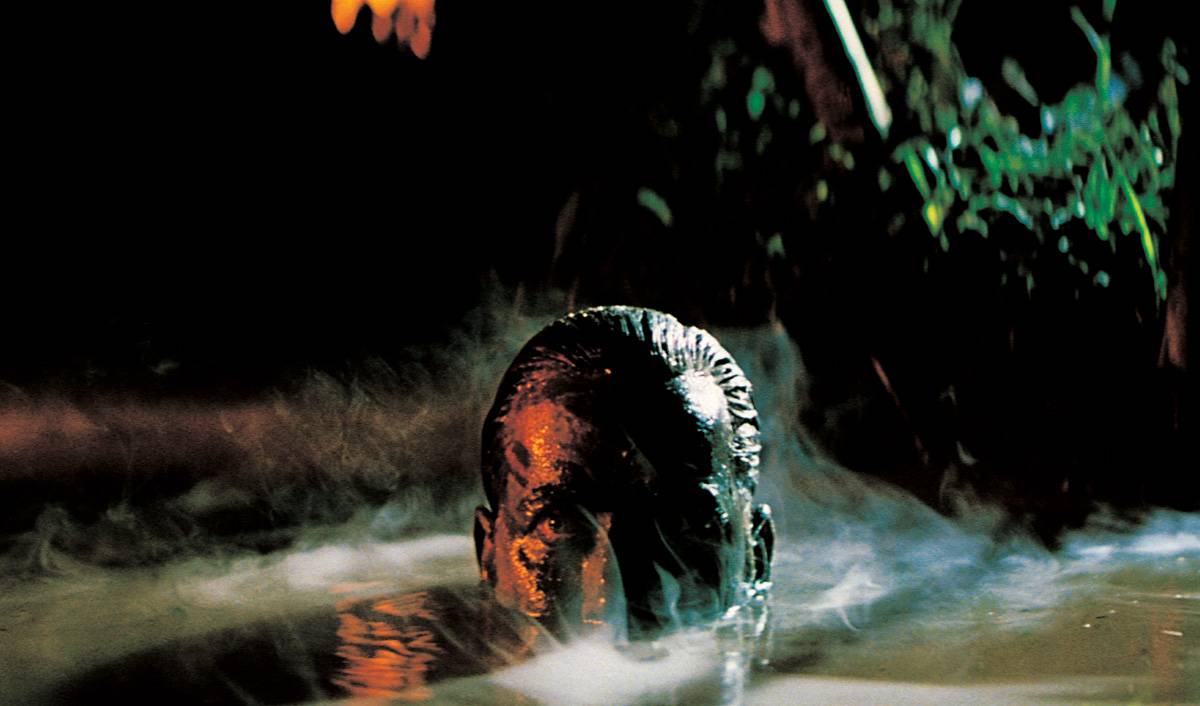
How could a film be so colourful yet so grimy? Francis Ford Coppola’s Vietnam War nightmare Apocalypse Now is so ahead-of-the-pack with its approach to, well, anything. That isn’t to say that it’s not deeply rooted in the basic elements of filmmaking, and the lighting proves this. Like some of the earlier films on this list, Apocalypse Now loves to bathe in the darkest of shadows, especially during its final act (especially the unsettling climax).
If anything, Coppola and Vittorio Storaro almost worked with the antithesis of progressive filmmaking by going backwards. Some shots lose their depths-of-field thanks to their muddy lighting. Nothing shines during the day. It’s the nighttime where many things pop; the doomed subjects are lit by explosions and colourful flares and bombs.
There aren’t many examples of works (of any medium) that are by-the-book, that retrograde on purpose, and rewrite the book for the future. Apocalypse Now, one of the most archaic productions of all time, pulls off all three so effortlessly, you may not even notice at first.
7. Blade Runner (1982) Cinematographer: Jordan Creonenweth
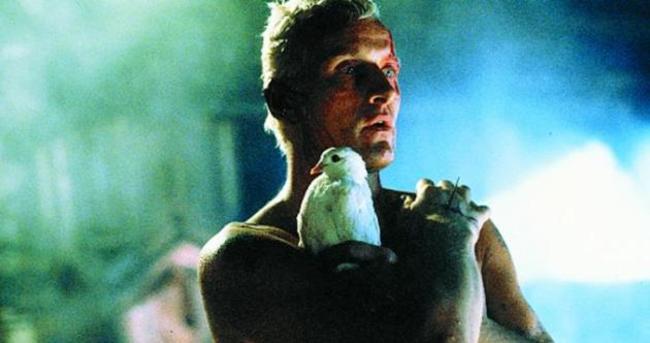
With Ridley Scott’s science fiction masterwork Blade Runner, you almost want to add an extra “n” in neo-noir, label it as “neon-noir” and call it a day. The only help these dismally dark images have come from unfriendly light sources. We have flickering signs from the gritty streets. We have the invasive light that sneaks in through the near-shut blinds. The light that shines from above doesn’t feel angelic, it instead seems to be a spying eye on the world below.
Scott and Jordan Cronenweth knew what made noir films, well, noir. They knew they were in a new era, and that they had the capability to rejuvenate the neo-noir style in a new way. When it comes to lighting, no film may have come close to evolving neo-noir quite like Blade Runner does. It maintains the existential darkness while electrifying the entire world to create an overbearing, dystopian future. It’s a spectacular anomaly.
8. Blood Simple (1984) Cinematographer: Barry Sonnenfeld
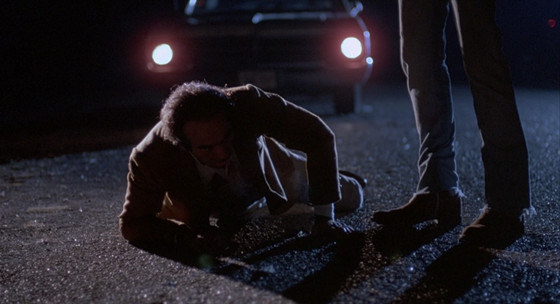
Joel and Ethan Coen have always picked the best cinematographers out there (a key collaborator will be making his way onto the list later). Even from day one, when they paired up with Barry Sonnenfeld to help elevate their noir western Blood Simple. Like many films on this list, shadows play a key role in how shots are set up. Light is fairly minimalistic here. You’re looking at neon signs, car head lights, sunsets and the simplest of interior lights.
Where Blood Simple excels is in its imaginative examples. One image that deserves to be used in every film lighting textbook ever is the climactic shootout, where bullet holes within a wall allow light to flood through in a very controlled way (as if flashlights have found the hiding spot and are looking for us within it). The light is always there, and it lingers as if it is stalking us; very appropriate given the film’s cat-and-mouse nature.
9. The New World (2005) Cinematographer: Emmanuel Lubezki
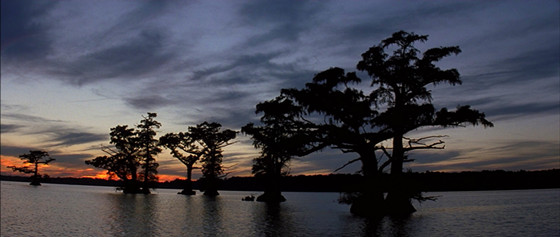
If we’re going to discuss Terrence Malick and Emmanuel Lubezki on this kind of list (and it’s imperative that we do), we should start at their first collaboration with the retelling of the story of Pocahontas in The New World.
Lubezki utilizes natural lighting in a way that fully enhances what Barry Lyndon was doing and then some. Sure, other directors and cinematographers have worked with natural lighting since (depending on who you look at), but no one’s doing it quite like Lubezki. Basic shots still look prettier than your usual standard shot, thanks to the smallest help by what the world around us can offer.
When Lubezki and Malick go all out, we are left with breathtaking images of water shimmering, sun soaking characters and nature, and shadows that – unlike other films on this list that embraced the flatness of silhouettes – still were defined with the smallest uses of light (thus coming to life). Seeing as The New World has received some serious reevaluations within recent years, we’re fully aware that it’s a gorgeous film (all the more reason to include to here).
10. The Assassination of Jesse James by the Coward Robert Ford (2007) Cinematographer: Roger Deakins
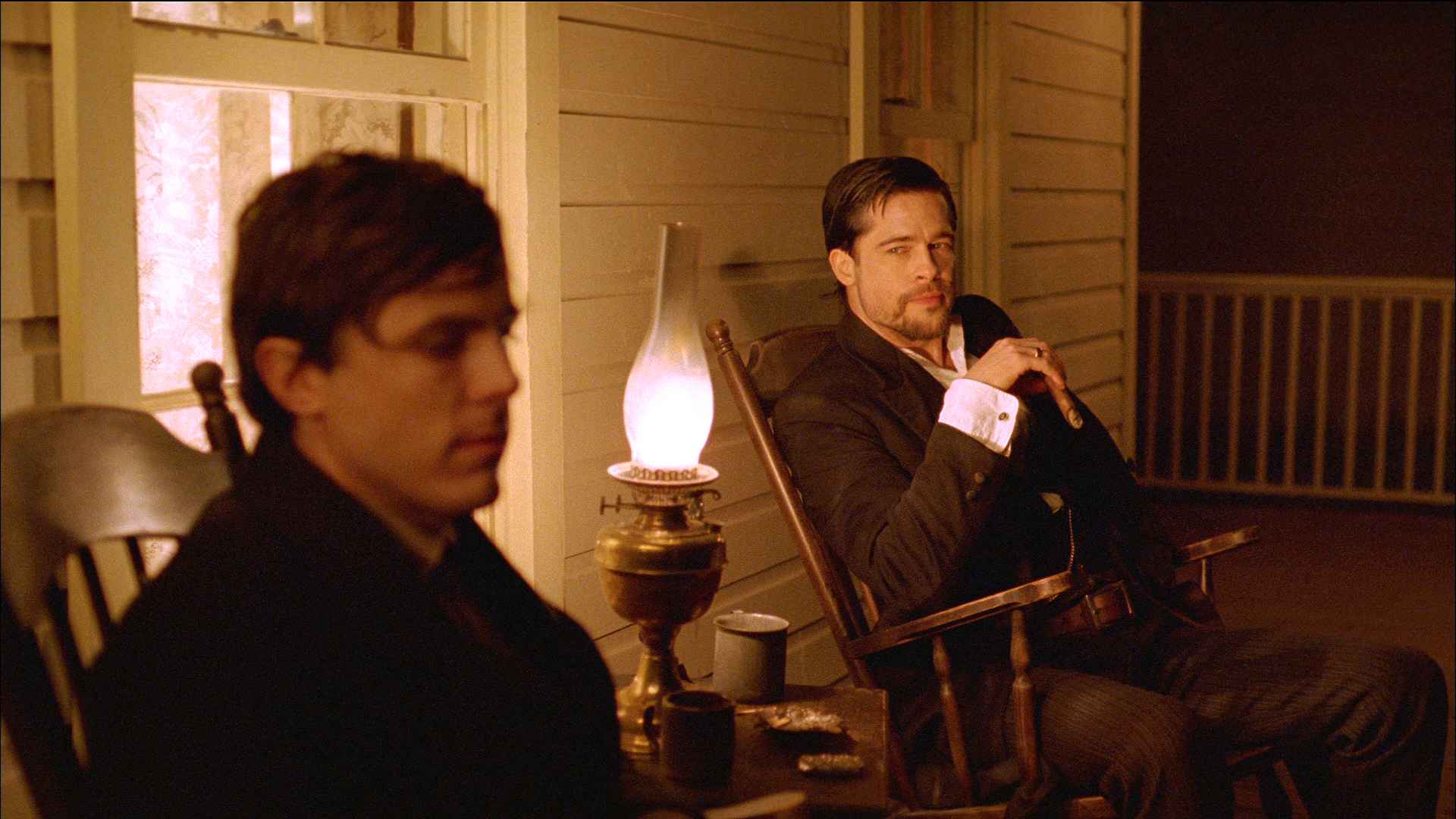
Well, what Film Lighting 101 class is complete without everyone’s favourite director of photography Roger Deakins? It might be hard to pick his best achievement outside of us picking our own personal favourites. I’m going with his stunning work on Andrew Dominik’s The Assassination of Jesse James, where the entire film is drenched in golden and sepia hues. With specific uses of blurring, shots are turned into vignettes to recreate how the earliest films looked (with much better technology, of course). Naturally, Deakins’ use of lighting works the same way; he went with a primary approach, with new tricks and ideas.
Still shots are blessed by natural lights, pitch-black shadows, and more. When the shadowy ghost of Jesse James bursts through the smoke emitting from a stalled train, it’s something out of a dream.
When the titular assassination takes place, the only ray of light is the literal ray of light coming from outside, illuminating the lead characters in their darkest moment. Deakens is clear of where film techniques came from and where they can go; he loves combining the two to create a signature style that’s impossible to imitate.